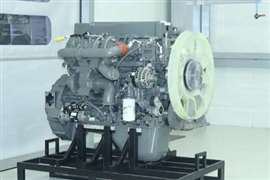OSHA/SIA alliance provides MCWP safety tips
19 August 2009
"The recently approved Mast Climbing Work Platform Safety Tips are a great first step toward making the public more aware of what needs to be considered when using this type of equipment," said Greg Janda, mast climbing council chairman. "We look forward to working with OSHA, through the alliance program to develop more safety-related material and see this as an opportunity to reach even more of the workforce to help educate them on the safe use of mast climbing work platforms."
The alliance has said that the MCWP is a "tool of the trade primarily used to position personnel, along with their necessary tools and materials, to perform their work. Training is required - death or serious injury may occur. The major causes of injury/fatality include the lack of training, improper use, falls, inadequate guardrail protection, collapses, improper planking and inadequate inspection."
The alliance goes on to say:
- MCWPs should be operated, used, erected and dismantled only by personnel who have been properly authorized, trained and familiarized with the specific model/machine.
- Equipment should not be accessed or operated unless supervised by a competent person at point of use.
- A pre-start inspection must be completed, by a competent person, at the beginning of each shift prior to use.
- Do not exceed the maximum load limitations (main deck and extensions) for the configuration of the MCWP, including both personnel and material.
- Make sure that all inspections and maintenance is performed as required and according to manufacturer's instructions. Report problems or malfunctions to the competent person.
- When dismantling do not remove the ties unless the base and remaining ties can support the MCWP configuration without tipping.
- Make sure extensions are fully planked with scaffold grade plank or equivalent and properly secured.
- When moving operating the MCWP, always look in the direction of travel.
And the alliance created the following safety tips for MCWP use:
- Always install guardrails and mast guards. Ensure access gates and other access locations are protected with guardrails.
- Do not operate a MCWP under the influence of drugs, alcohol or other substances.
- Use all required personal fall protection equipment during erection, dismantling or when a fall hazard exists. Maximum distance from front unguarded edge to face of structure is 14 inches except for plastering/lathing which is 18 inches.
- Only use normal operating controls for the MCWP. Do not bypass or override the normal operating controls or safety devices.
- Check for hazards such as overhead obstructions, building protrusions, high voltage lines, inadequate base support, drop offs, debris and other unsafe conditions.
- Do not alter ties, platform or base without the written authorization of the manufacturer and Competent Person.
- Verify ground compaction or base conditions.
- Be aware of weather conditions and how they can affect the use of the MCWP.






